Over millions of years, birds have developed forelimbs — wings — that let them take to the skies. These creatures can sleep, eat, and mate while in flight.
Migratory birds have the ability to achieve incredible heights, easily joining the most powerful manmade air transports in the world. These creatures inspired the architects of air travel, as well as skydivers, zip-lining, and soaring on roller coasters.
We’d all love to be able to leap in the air like these 10 highest-flying birds in the world.
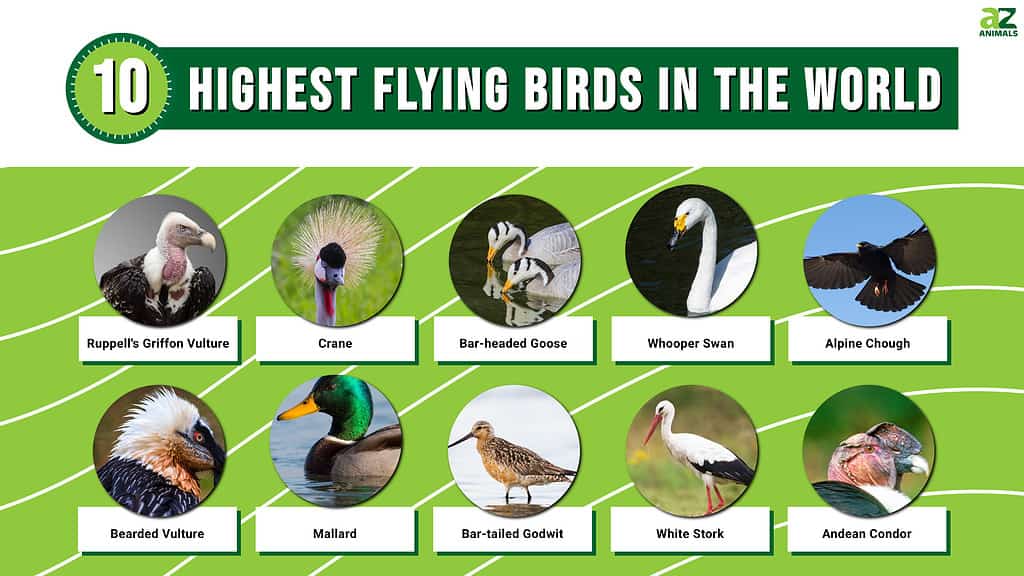
#1 Ruppell’s Griffon Vulture — 37,000 feet
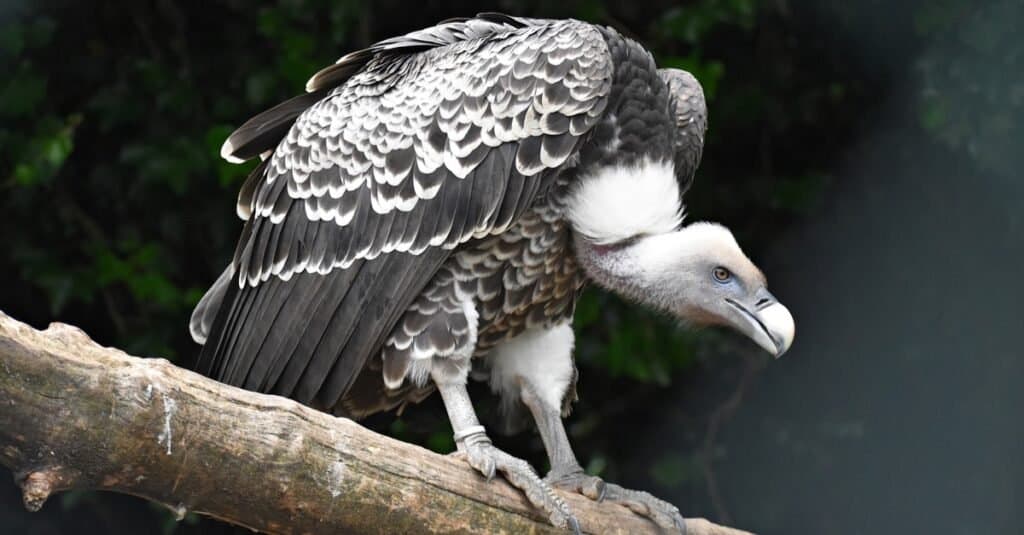
©Gabriela Beres/Shutterstock.com
At 37,000 feet, the griffon vulture is on record as reaching the highest altitude in the bird kingdom. You’d think the thinning air would cause problems. But the Ruppell vulture has unique hemoglobin that creates an effective system for oxygen intake.
The Ruppell griffon vulture has a wingspan of 7.54 to 8.2 feet in length. In general, these birds weigh between 15 and 20 pounds. The scavengers have great eyesight, able to spy a carcass from tremendous heights. They can reach speeds of up to 22 mph and stay in the air for hours.
The griffon is a member of the vulture family. Read more about vultures here.
#2 Crane — 33,000 feet
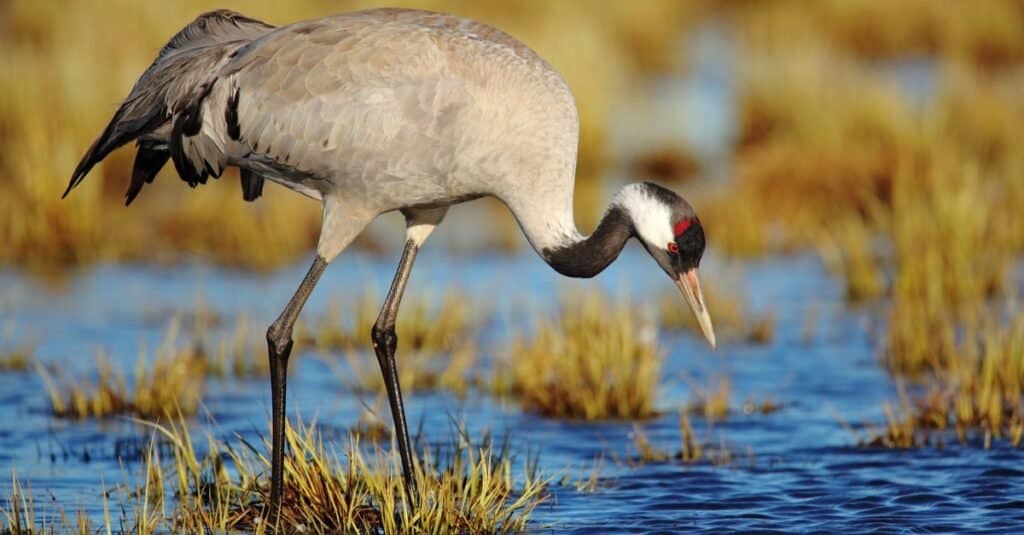
©Ondrej Prosicky/Shutterstock.com
The common crane can hit over 30,000 feet and has flown across the Himalayas. Also known as the Eurasian crane, the bird’s seen in Northern parts of Asia and Europe. Considered a medium-sized bird, the crane’s wingspan is between six and eight feet.
The crane is a long-distance migrant and winters in Northern Africa. During migration, common cranes tend to fly a V-shaped grouping. They have a distinctive call and extremely long legs. One of the crane’s most unique features is a ruffle of tail feathers atop its head.
You can learn more about the common crane here.
#3 Bar-headed Goose — 29,000 feet
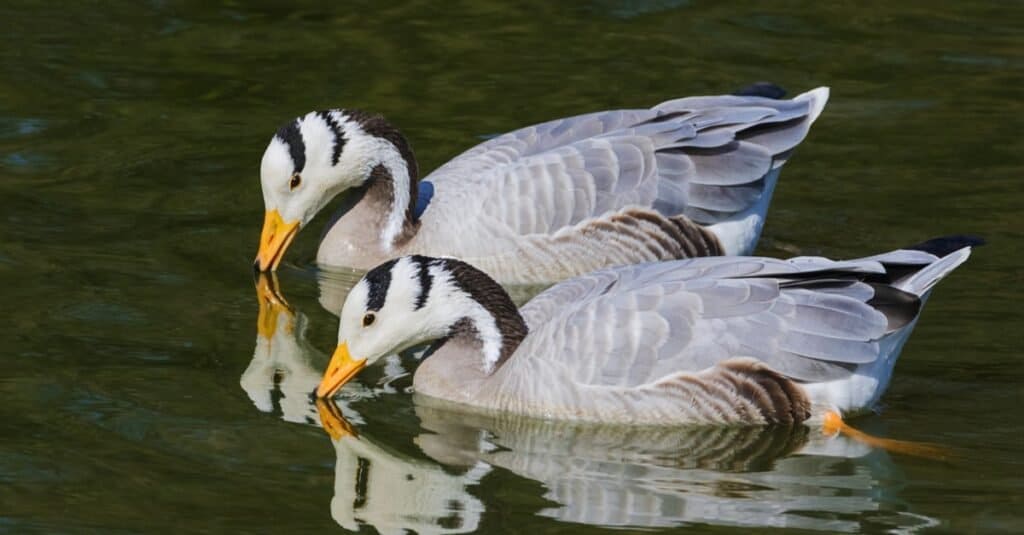
©Ian Duffield/Shutterstock.com
The bar-headed goose can ascend to 29,000 feet, high enough to sail over Mount Everest. Native to Central Asia, the bird perfectly adapts to high Himalayan peaks where air pressure drops dynamically low. These geese have a greater lung capacity than other species in the family.
The bodies contain more blood cells. In flight, they can increase their cardiac output. Their names come from the dark bars circling the head. They live in high-altitude lakes all over Central Asia. In the winter, the birds migrate South, capable of crossing distances of 1,000 miles in one day.
The bar-headed goose is, not surprisingly, a cousin to the goose, who you can read more about here.
#4 Whooper Swan — 27,000 feet

©Rishad Allaberdiev/Shutterstock.com
With its whooping call, this swan is a large bird. The whooping swan loves flooded grasslands, tundras, wetlands, ponds, and lakes. They inhabit Southern Eurasia. You’ll note them for their yellow and black bills and long necks. In the colder months, the whopper swan heads off to the likes of Germany, Britain, and Denmark.
Like many migrating birds, the whooping swan will move in a ‘V’ formation made up of thousands of animals. Usually, they stick to an altitude of about 8,000 feet while they migrate. But records show they’ve attained up to 27,000 feet above sea level.
Learn more about the Swan family here.
#5 Alpine Chough — 26,500 feet
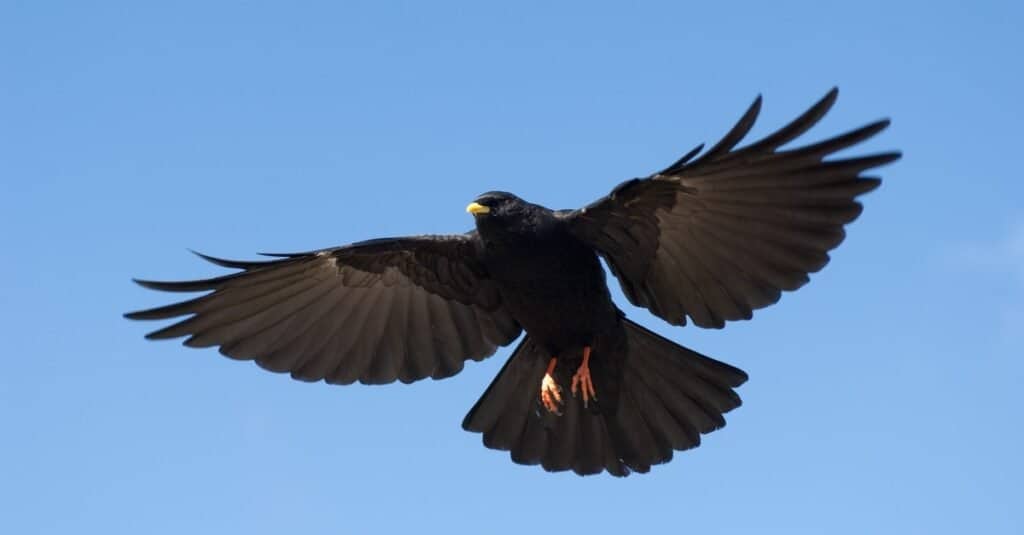
©Wolfgang Kruck/Shutterstock.com
The alpine chough lives in the high mountains of Central Asia and Southern Europe. As they have bright yellow bills, these animals are also referred to as yellow-billed chough. With its nests at altitudes of 21,000 or more feet, the alpine chough is the world’s highest nester.
Easily adapting to thin atmospheres, alpine choughs have extraordinary flight skills. They zoom eerily around the Himalayas’ highest peaks. And they can do so in the coldest winters and the harshest winds. You’ll find the alpine chough lurking around picnic areas and mountain restaurants where they happily let humans feed them.
The alpine chough is a member of the crow family.
#6 Bearded Vulture — 24,000 feet

©Martin Mecnarowski/Shutterstock.com
A large species of vulture, the bearded creature inhabits Southern Europe’s mountainous regions. The birds reach a height of four feet and weigh between 11 and 15 pounds. Wingspans go from eight to nine feet wide.
Bone eaters, the bearded vulture feasts exclusively on the bones of discovered carcasses. They swallow small bones whole. The acid in their stomach breaks down bone pieces for easy digestion. Big bones are taken into the air and dropped. The bird swings back around to chow on the broken pieces.
Learn more about the vulture here.
#7 Mallard — 21,000 feet
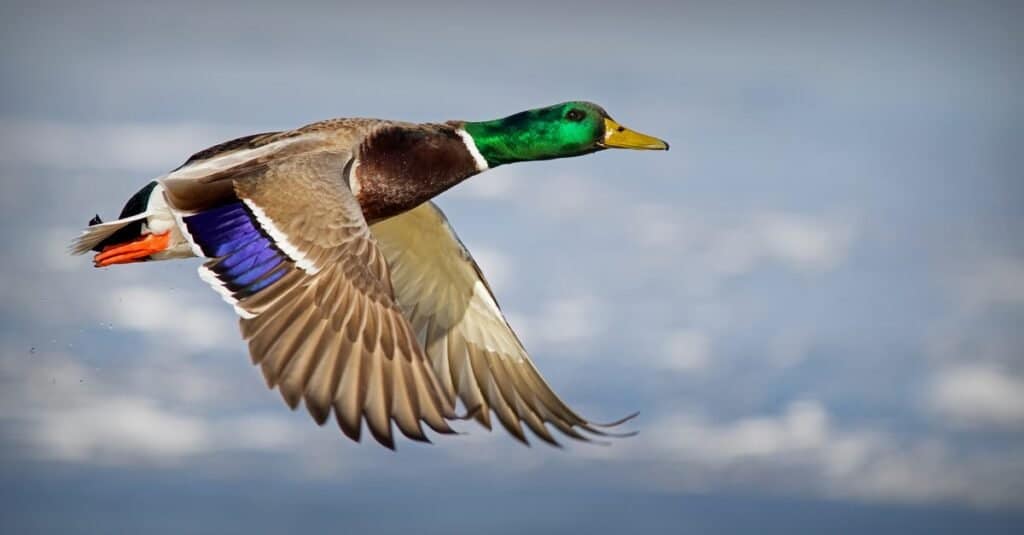
©Jeffry Weymier/Shutterstock.com
Located in Europe and North America, the mallard is a migratory wild duck. The mallard’s distinguished by its stunning yellow bill and that iridescent-green head. Females may have black and orange splotches on their bills.
The species often live in flocks and frequently mix with others in the duck family. Before winter sets in, the mallard migrates south for milder temperatures. They usually stick to altitudes of 1,000 to 4,000 feet but have records of flying at 21,000 feet.
Read more about the mallard here.
#8 Bar-tailed Godwit — 20,000 feet

©Dave Montreuil/Shutterstock.com
Breeding in the likes of Siberia and Alaska and spending their winters in New Zealand and Australia, the bar-tailed godwit is well-known for engaging in the world’s longest non-stop migration.
Moving from Alaska to the south, these birds cover almost 6,000 miles without taking a break. Large and long-billed, these nomads usually get from point A to point B 6,000 miles later over a seven or eight-day journey. Add that to the capacity to reach a max of 20,000 feet high during migration and you’ve got one of the toughest, highest-flying birds out there.
#9 White Stork — 16,000 feet
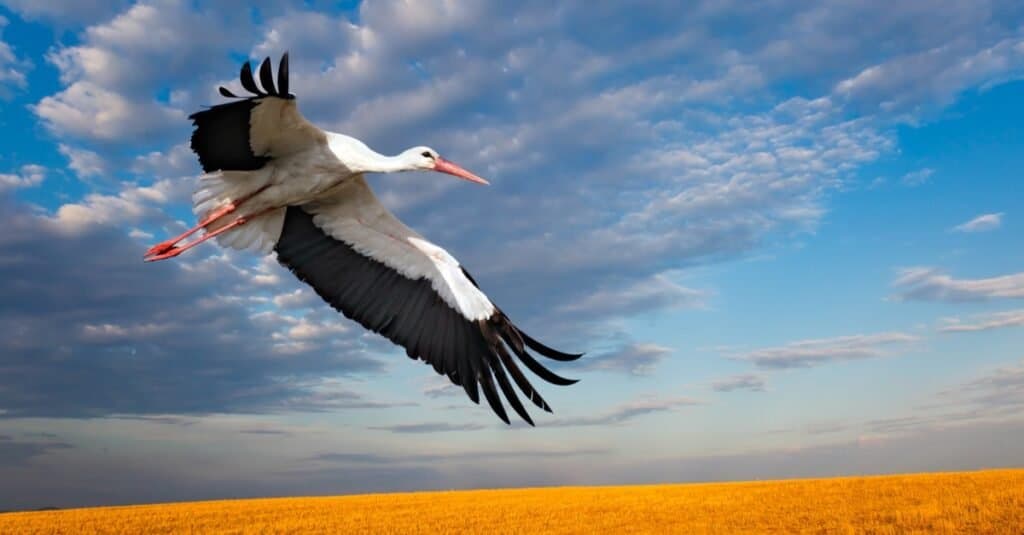
©muratart/Shutterstock.com
The white stork is a wading bird. It’s a popular creature highlighted by a neck that can go as long as 45 inches. You’ll find them throughout the warmer regions of West-central Asia and Europe. The creature’s wingspan can go up to 7.5 feet with a plumage that’s brilliant white.
White storks spend their winters in Africa. They come together in huge flocks of thousands for the trip. The journey south (and back) can take almost six weeks. The bird follows the heavy thermal systems across Europe into the Strait of Gibraltar and the Sahara desert.
You can read about a pair of the white stork’s cousins here and here.
#10 Andean Condor — 15,000 feet
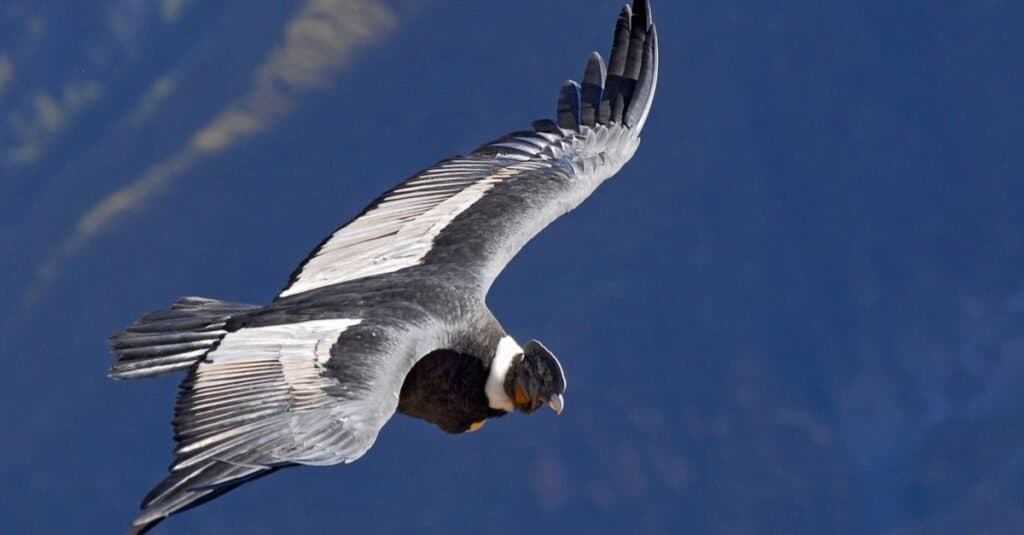
©Cezary Wojtkowski/Shutterstock.com
The Andean condor is a raptor. These are birds of prey, feeding on carrion or live prey. With exceptional eyesight, they can spot a meal from incredible distances. The animals use sharp beaks and strong claws to attack and collect the meat.
The large creatures inhabit the grassy plains and high regions of South America. They weigh up to a massive 33 pounds spanning a 10-foot frame. They’ll reach up to 15,000 feet and glide majestically. In many countries, the Andean condor is a symbol of liberty, power, and good health. It’s the national bird in many parts of South America.
Summary of the 10 Highest Flying Birds:
| Rank | Bird | Height in Feet |
|---|---|---|
| #1 | Ruppel’s Griffon Vulture | 37,000 feet |
| #2 | Crane | 33,000 feet |
| #3 | Bar-headed Goose | 29,000 feet |
| #4 | Whooper Swan | 27,000 feet |
| #5 | Alpine Chough | 26,500 feet |
| #6 | Bearded Vulture | 24,000 feet |
| #7 | Mallard | 21,000 feet |
| #8 | Bar-tailed Godwit | 20,000 feet |
| #9 | White Stork | 16,000 feet |
| #10 | Andean Condor | 15,000 feet |
Watch Our Video on These Amazing Birds
Top 10 Highest Flying Birds vs 10 Flightless Birds
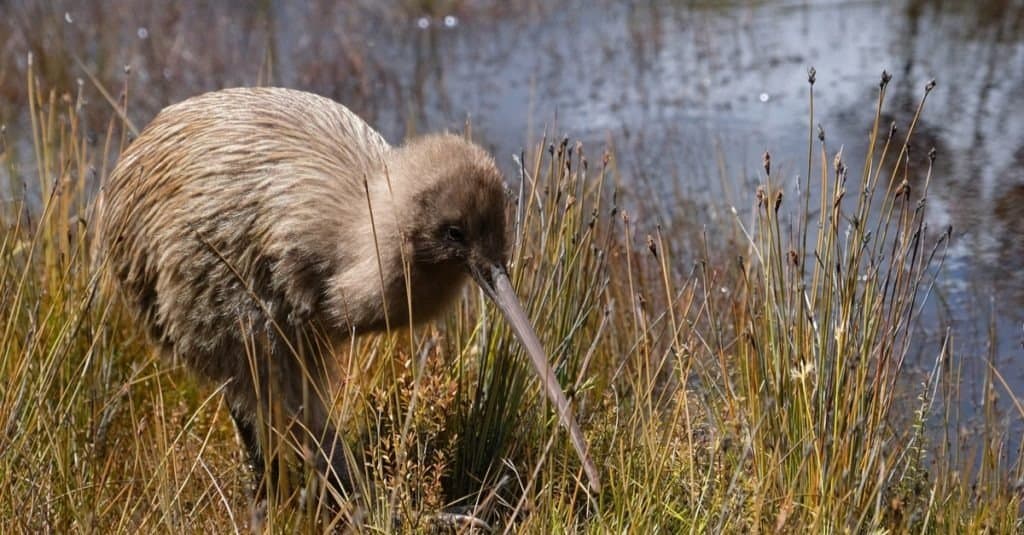
The Kiwi is an example of a ratite or flightless bird.
©Vee Snijders/Shutterstock.com
The heights that some birds can reach in the atmosphere are simply astounding. But there’s a whole other set of birds that can’t fly at all! Here’s a comparison of 10 birds that can fly the highest vs 10 that can’t lift off to save their lives.
| Rank | Highest Flying Birds | Flightless Birds |
|---|---|---|
| 1 | Ruppel’s Griffon Vulture | Takahe |
| 2 | Crane | Kiwi |
| 3 | Bar-headed Goose | Emu |
| 4 | Whooper Swan | Flightless Cormorant |
| 5 | Alpine Chough | Cassowary |
| 6 | Bearded Vulture | Weka |
| 7 | Mallard | Steamer Duck |
| 8 | Bar-tailed Godwit | Emperor Penguin |
| 9 | White Stork | Ostrich |
| 10 | Andean Condor | Kakapo |
The photo featured at the top of this post is © Cinematographer/Shutterstock.com
Thank you for reading! Have some feedback for us? Contact the AZ Animals editorial team.







